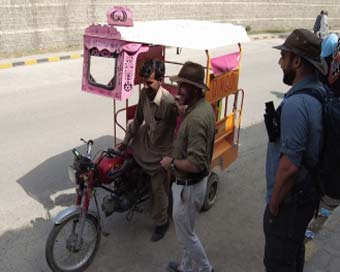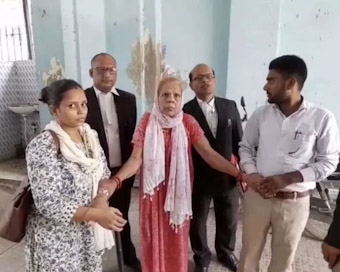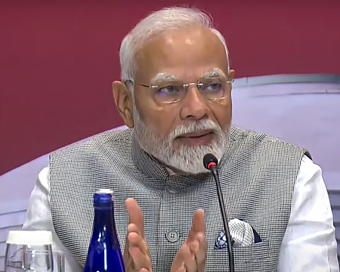 PM Modi visit USA
PM Modi visit USA Only the mirror in my washroom and phone gallery see the crazy me : Sara Khan
Only the mirror in my washroom and phone gallery see the crazy me : Sara Khan Karnataka rain fury: Photos of flooded streets, uprooted trees
Karnataka rain fury: Photos of flooded streets, uprooted trees Cannes 2022: Deepika Padukone stuns at the French Riviera in Sabyasachi outfit
Cannes 2022: Deepika Padukone stuns at the French Riviera in Sabyasachi outfit Ranbir Kapoor And Alia Bhatt's Wedding Pics - Sealed With A Kiss
Ranbir Kapoor And Alia Bhatt's Wedding Pics - Sealed With A Kiss Oscars 2022: Every Academy Award Winner
Oscars 2022: Every Academy Award Winner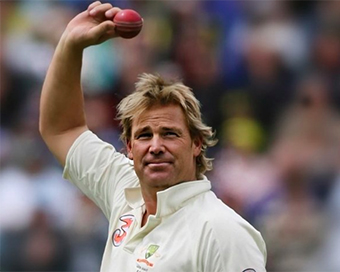 Shane Warne (1969-2022): Australian cricket legend's life in pictures
Shane Warne (1969-2022): Australian cricket legend's life in pictures Photos: What Russia's invasion of Ukraine looks like on the ground
Photos: What Russia's invasion of Ukraine looks like on the ground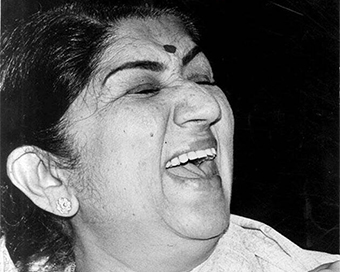 Lata Mangeshkar (1929-2022): A pictorial tribute to the 'Nightingale of India'
Lata Mangeshkar (1929-2022): A pictorial tribute to the 'Nightingale of India'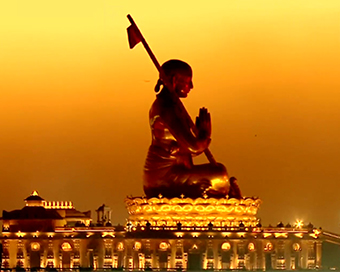 PM Modi unveils 216-feet tall Statue of Equality in Hyderabad (PHOTOS)
PM Modi unveils 216-feet tall Statue of Equality in Hyderabad (PHOTOS)Hockey India has announced a 54-member core probable squad for the upcoming senior men’s
- Satwik-Chirag return as BAI names 14-strong squad for BWF Sudirman Cup Finals 2025
- Men’s Sr Hockey Nationals to be played in division-based format from April 4
- Mensik denies Djokovic 100th title in Miami final
- KIPG: Son of a vegetable vendor, Bihar’s Jhandu Kumar eyes Worlds, 2028 Paralympics
- Hardik Singh credits hard work and team unity for receiving HI Midfielder of the Year award
Google celebrates social reformer Raja Ram Mohan Roy Last Updated : 22 May 2018 01:47:16 PM IST 
Google on Tuesday celebrated the 246th birth anniversary of renowned social reformer Raja Ram Mohan Roy recognised as the "Father of the Indian Renaissance", who paved the way for a modern India.
Roy was a non-conformist to many a tradition he was born into on this day in 1772, in Radhanagar village in Murshidabad district of West Bengal.
Although born into a Hindu Brahmin family, where his father Ramkanto Roy, was a Vaishnavite, Roy at a young age left home, shunned orthodox rituals and idol worship and became a staunch supporter of monotheism.
Following his differences with his father, Roy went on a journey that took him far from his roots. He travelled extensively including in Tibet and the Himalayas.
He studied Persian and Arabic along with Sanskrit, which influenced his thinking about God. He read Upanishads, Vedas and the Quran and translated a lot of the scriptures into English.
When he returned home, his parents married him off in a bid to change his outlook. But Roy continued to explore the depths of Hinduism only to highlight its hypocrisy.
After his father's death in 1803 he moved to Murshidabad, where he published his first book Tuhfat-ul-Muwahhidin (A Gift to Monotheism).
Roy took a keen interest in European politics and followed the course of the French Revolution.
In 1814, he settled in Calcutta, and the following year he founded the Atmiya Sabha. In 1828, he established the Brahmo Samaj, which is considered to be one of India's first socio-religious reform movements.
However, his most significant contribution as a social engineer was towards women's rights. Nearly 200 years ago, when evils like -- Sati -- plagued the society, Roy played a critical role to bring about a change.
He opposed the regressive practice that forced a widow to immolate herself on husband's pyre.
The doodle on Roy, created by Beena Mistry, a designer based out of Toronto, shows Roy speaking at a public meeting with his detractors in the background. There is also the presence of a woman among the audience, this is at a time when the purdah system was rigidly followed.
He campaigned for equal rights for women, including the right to remarry and the right to hold property.
In 1830, he travelled to the UK as the Mughal Empire's envoy to ensure that Lord William Bentinck's law banning the practice of Sati was not overturned.
Roy was also one of the pioneers of Indian journalism. He published several journals in Bengali, Persian, Hindi and English to propagate social reforms.
Bengali weekly Samvad Kaumudi was the most important journal that he published. The Atmiya Sabha published an English weekly called the Bengal Gazette and a Persian newspaper called Miratul-Akbar.
Roy died in a village near Bristol in England on September 26, 1833 of meningitis, and was buried there.IANS New Delhi For Latest Updates Please-
Join us on
Follow us on








172.31.16.186


